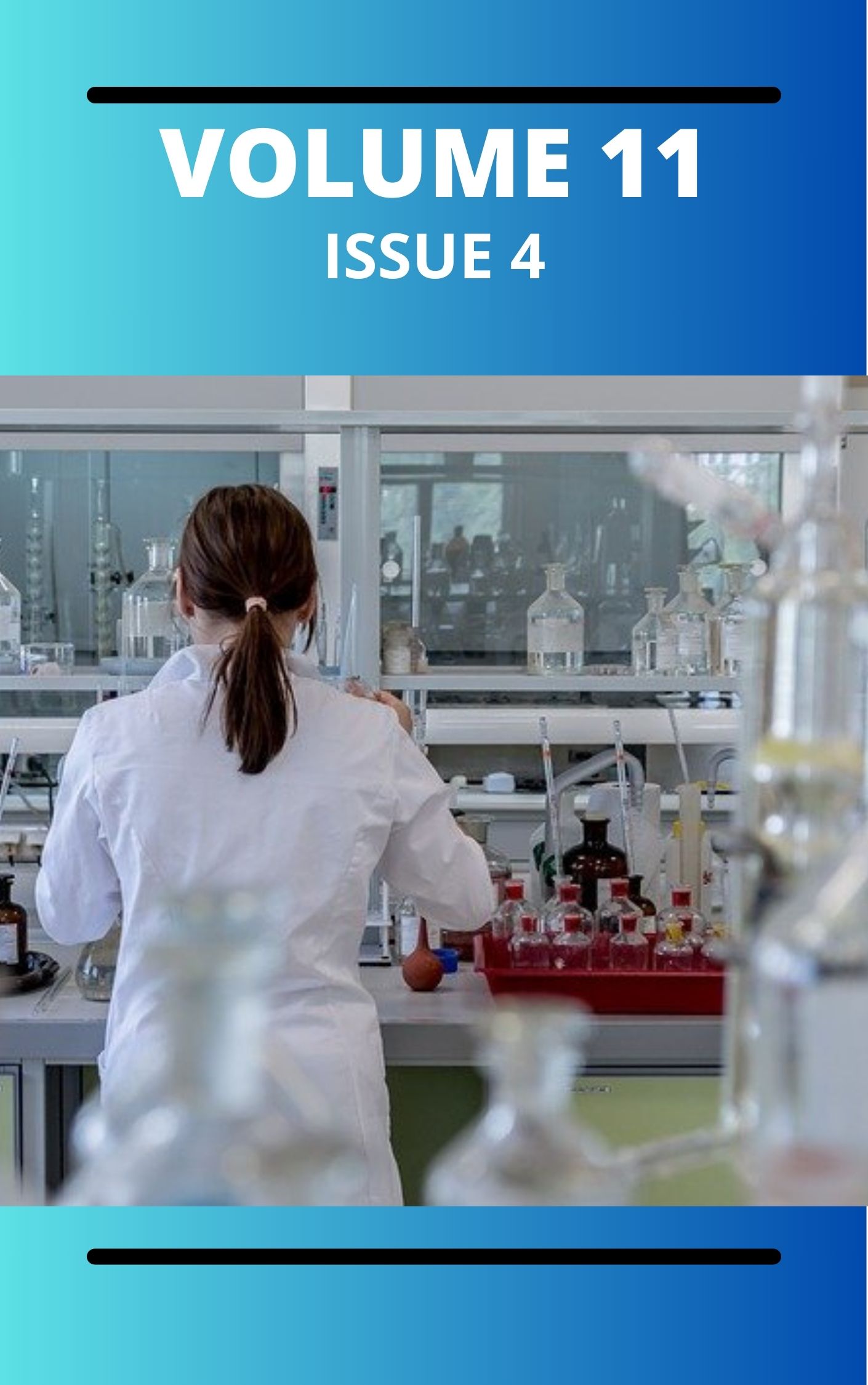Computational Study of the Reaction Mechanism for the Formation of 4,5-Diaminophthalonitrile from 4,5-Dibromo-1,2-Diaminobenzene and Copper Cyanide
DOI:
https://doi.org/10.4314/3fdxhb05Keywords:
Transition state, density functional theory, thermodynamic property, activation barrierAbstract
This study investigates the mechanism of the reaction between 4,5-dibromo-1,2-diaminobenzene and copper cyanide using Density Functional Theory (DFT) calculations. The kinetics and the thermodynamic properties of the reaction were analyzed, revealing two major steps with activated complexes AC1 and AC2. Scheme 3 accurately depicts the reaction pathway. A triangular Cu-C=N moiety was found in the calculated transition states (TS), AC1 and AC2. The thermodynamic parameters for the first step show ΔG = -606.8 kJ mol-1 , ΔH = -610.7 kJ mol-1 and ΔS = -0.0132 kJ mol-1K-1 while for the second step ΔG = -600.1 kJ mol-1, ΔH = -603.6 kJ mol-1, and ΔS = -0.0117 kJ mol-1K-1 were obtained. The activation energies (Ea and Ec) for steps 1 and 2 are 189.0 kJ mol-1 and 210.6 kJ mol-1, respectively. The positive values of and confirm the presence of energy barriers in both steps. These findings provide critical insights into the energetics and mechanism of the DDB reaction with copper cyanide, which is very crucial in understanding the strategy for the development of efficient synthetic procedures for the phthalonitrile.
Downloads
Published
Issue
Section
Similar Articles
- Promise A. Azor, Edikan E. Akpanibah, Okechukwu I. Edozieunor, Closed Form Solutions of a Re-Insurer’s Surplus, Stochastic and Time-Dependent Investment Returns with Random Parameters , Communication In Physical Sciences: Vol. 11 No. 1 (2024): VOLUME 11 ISSUE 1
- Gideon Wyasu, Determination of Bacteriological and some physicochemical properties of Hospital wastewater , Communication In Physical Sciences: Vol. 4 No. 2 (2019): VOLUME 4 ISSUE 2
- Musaddiq Sirajo, Abubakar Umar, Mardhiyya Falalu, Maimuna Ahmad Aliyu, Regularization Techniques: A Comparative Analysis of Ridge, Lasso, and Elastic Net Approaches in Predicting Mental Health Consequences Using Mental Health Survey Dataset , Communication In Physical Sciences: Vol. 12 No. 5 (2025): Vol 12 ISSUE 5
- Steven S. Odoemelam, Jude C. Nnanji, A Review on the Synthesis and Application of Nanomaterials for the Removal of Emerging Contaminants from Industrial Wastewater , Communication In Physical Sciences: Vol. 5 No. 3 (2020): VOLUME 5 ISSUE 3
- Uzoma Nwokoma Esomchi, , Obinna. Christain. Dinneya, , Chukwunenyoke Amos-Uhegbu, , Solape Simeon Fadeyi, MAGNETIC RESPONSE ANALYSES IN PARTS OF SOUTHERN BENUE TROUGH: IMPLICATIONS FOR MINERAL PROSPECTING , Communication In Physical Sciences: Vol. 12 No. 3 (2025): VOLUME 12 ISSUE 3
- I. O. Isaac, Synthesis Of Pharmacologically Active Hexahydroacridine-1,8 (2H, 5H)-diones using Nickel (II) Flouride Tetrahydrate as a New Heterogeneous Catalyst , Communication In Physical Sciences: Vol. 5 No. 2 (2020): VOLUME 5 ISSUE 2
- Yisa Adeniyi Abolade, A Conceptual Framework for Managing Pandemics: Integrating Disease Models with Public Behavior and Misinformation Control , Communication In Physical Sciences: Vol. 12 No. 5 (2025): Vol 12 ISSUE 5
- Simbiat Atinuke Lawal, Samuel Omefe, Adeseun Kafayat Balogun, Comfort Michael, Sakiru Folarin Bello, Itunu Taiwo Owen, Kevin Nnaemeka Ifiora, Circular Supply Chains in the Al Era with Renewable Energy Integration and Smart Transport Networks , Communication In Physical Sciences: Vol. 7 No. 4 (2021): VOLUME 7 ISSUE 4
- A. Abdulazeez, N. C. Nwokem, I. I. Ibrahim, A. Uthman, H. L. Zubairu, M. Abubakar, Chemical Information from Proximate and Elemental Composition of Acalypha hispida Leaf , Communication In Physical Sciences: Vol. 5 No. 2 (2020): VOLUME 5 ISSUE 2
- Nsikak Bassey Essien, Rice Husk as Precursor for Silicon Oxide Nanoparticles: Synthesis and Characterization , Communication In Physical Sciences: Vol. 11 No. 4 (2024): VOLUME 11 ISSUE 4
You may also start an advanced similarity search for this article.




